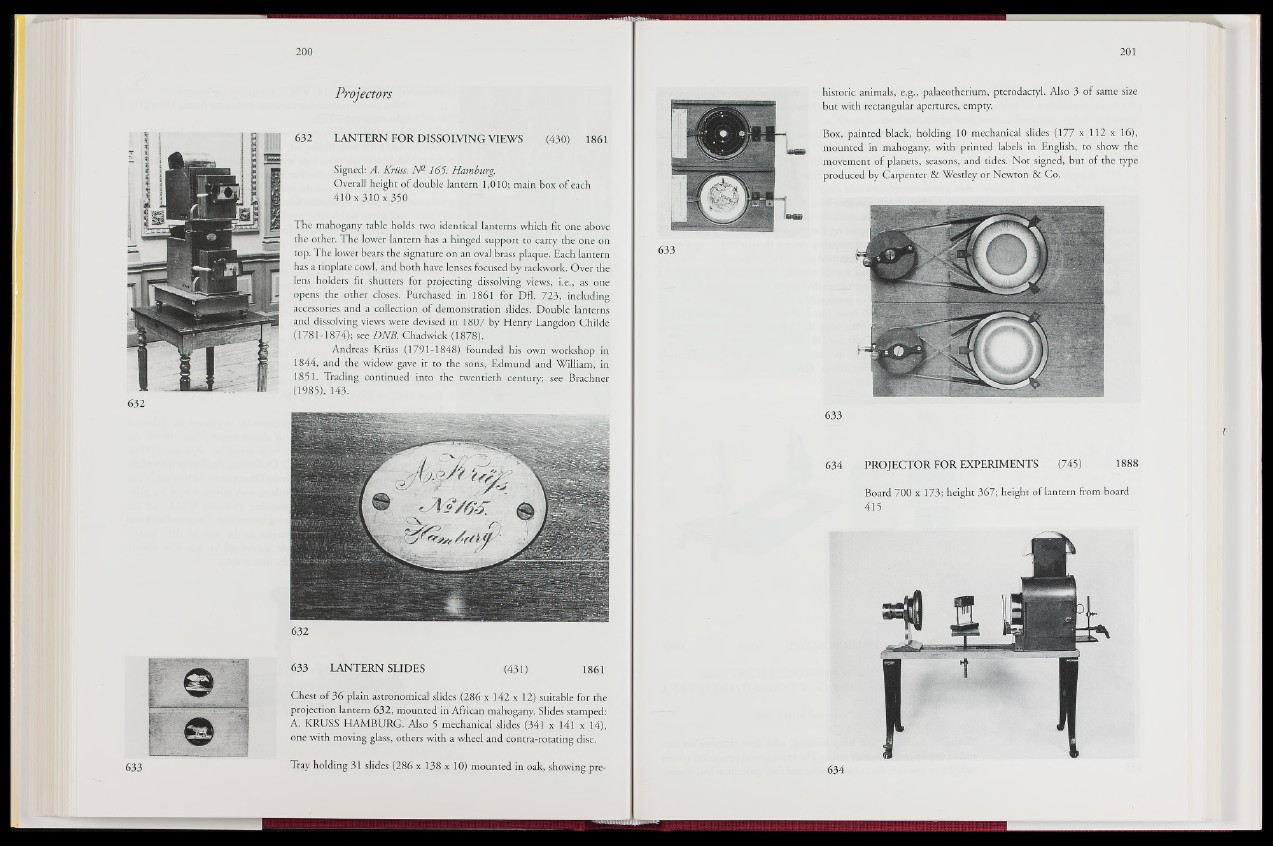
Projectors
632 LANTERN FOR DISSOLVING VIEWS (430) 1861
Signed: A. Kriiss. 165. Hamburg.
Overall height of double lantern 1,010; main box of each
4 1 0 x 3 1 0 x 3 5 0
The mahogany table holds two identical lanterns which fit one above
the other. The lower lantern has a hinged support to carry the one on
top. The lower bears the signature on an oval brass plaque. Each lantern
has a tinplate cowl, and both have lenses focused by rackwork. Over the
lens holders fit shutters for projecting dissolving views, i.e., as one
opens the other closes. Purchased in 1861 for Dfl. 723, including
accessories and a collection of demonstration slides. Double lanterns
and dissolving views were devised in 1807 by Henry Langdon Childe
(1781-1874); see DNB. Chadwick (1878).
Andreas Kriiss (1791-1848) founded his own workshop in
1844, and the widow gave it to the sons, Edmund and William, in
1851. Trading continued into the twentieth century; see Brachner
(1985), 143.
633 LANTERN SLIDES (431) 1861
Chest of 36 plain astronomical slides (286 x 142 x 12) suitable for the
projection lantern 632, mounted in African mahogany. Slides stamped:
A. KRUSS HAMBURG. Also 5 mechanical slides (341. x 141 x 14),
one with moving glass, others with a wheel and contra-rotating disc.
633 Tray holding 31 slides (286 x 138 x 10) mounted in oak, showing prehistoric
animals, e.g., palaeotherium, pterodactyl. Also 3 of same size
but with rectangular apertures, empty.
Box, painted black, holding 10 mechanical slides (177 x 112 x 16),
[g^l mounted in mahogany, with printed labels in English, to show the
movement of planets, seasons, and tides. Not signed, but of the type
produced by Carpenter & Westley or Newton & Co.
mm
633
634 PROJECTOR FOR EXPERIMENTS S I 5) 1888
Board 700 x 173; height 367; height of lantern from board
415
634